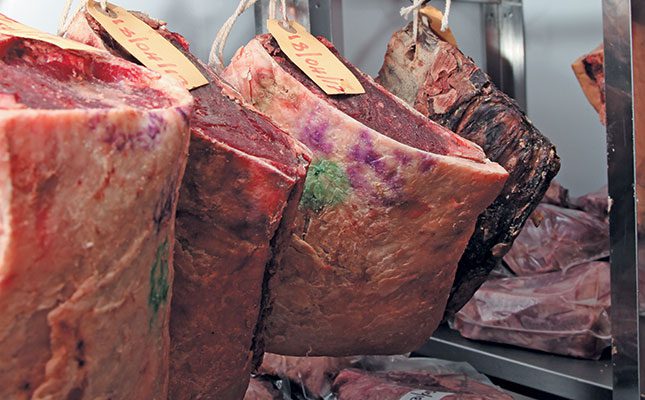
This is according to Dr Rebone Moerane, head of the University of Pretoria’s (UP) Department of Production Animal Studies, who together with a team of experts conducted a study in 2019 and 2020 into the prevalence of the foodborne pathogen Listeria monocytogenes in beef and beef products at some abattoirs and retailers in Gauteng, Mpumalanga and North West.
The research by UP’s Faculty of Veterinary Science and the Agricultural Research Council-Onderstepoort Veterinary Institute showed that, among other findings, 4,6% of chilled carcasses sampled at seven abattoirs in Gauteng were contaminated with L. monocytogenes.
The study, which was funded by Red Meat Research and Development South Africa, was prompted by the 2017-2018 outbreak of listeriosis in South Africa, which led to 1 060 confirmed cases and about 216 deaths. Processed products, polony, in particular, were suspected to be the main source of the outbreak.
Listeriosis is a life-threatening disease that could cause miscarriage and stillbirth among pregnant women. Most human cases are associated with the consumption of ready-to-eat foods, and the risk of illness increases with the number of cells ingested. The pathogen is able to survive and multiply at refrigerated temperatures at which foods are stored to prevent spoilage.
Speaking to Farmer’s Weekly, Moerane said that the investigations and outcomes of the research indicated that there was a potential risk of another listeriosis outbreak in future.
“This could be caused particularly by consumption of ready-to-eat meat products (processed meat products) if relevant government departments, industry and other role players do not implement immediate strategic interventions. Processed foods become contaminated by contact with equipment, the handling of raw products, or from post-processing settings in which the pathogen can survive despite the routine use of disinfectants,” Moerane said.
“Because of potential contamination during slaughter, carcasses can become contaminated, leading to contaminated meat and meat products. A wide variety of foods, including beef, pork, poultry and milk-based products, have been reported to harbour the pathogen and can cause listeriosis among consumers.”
Research was conducted at the three levels of beef production. Samples of faeces, feeds, silage and water were collected from cattle farms; carcass swabs were taken from abattoirs, as were samples of faeces and effluents; and samples of raw beef and beef products (including ready-to-eat items) were collected from retail outlets of all sizes.
Some of the serotypes of L. monocytogenes detected by the team belong to serogroups that are known to have the potential to cause human listeriosis.
The researchers found that the risk of exposure of cattle to L. monocytogenes bacteria on farms is minimal. However, the detection of 4,6% of chilled carcasses sampled at Gauteng abattoirs being contaminated with the bacteria is troubling, as are the findings at retail outlets, according to Moerane.
“Some of the contaminated products were ready-to-eat items, including polony, which is widely consumed, and biltong. This increases the risk of human exposure to the pathogen.”
When asked about how carcasses could became contaminated, Moerane said: “[It can happen] from a water source, if the water source used at the processing facilities (abattoirs, retail) is contaminated, poor dressing processes, that is, how the animals are skinned, the inappropriate methods of removing offal at the abattoirs, inappropriate handling of meat at processing facilities and retail, and unsatisfactory hygiene, cleanliness and disinfection/sanitation procedures at processing plants and retail. This includes employees and equipment at these facilities/outlets.”
Speaking about how best to avoid contamination, he said: “Education and awareness of members of the public on foodborne diseases such as listeriosis is important, as is improved hygiene measures throughout the value chain. This includes processes at abattoirs such as proper cleaning, disinfection/sanitation and implementation of microbiological monitoring programmes by abattoir owners.”
He said putting pressure on relevant government authorities to improve their inspection services and monitoring programmes was also important.
“This also affects authorities at municipal level to monitor the retail sector. [This is] a serious concern. Additionally, there must be appropriate handling and hygiene measures at home once meat products, particularly ready-to-eat products, have been purchased. Avoid contamination of meat and meat products and ensure proper cooking measures.”
When contacted, Peter Gordon, CEO of the South African Meat Processors’ Association, declined to comment on the matter. “The issue is aimed at the red meat industry and it would be best to speak to them,” he said.











